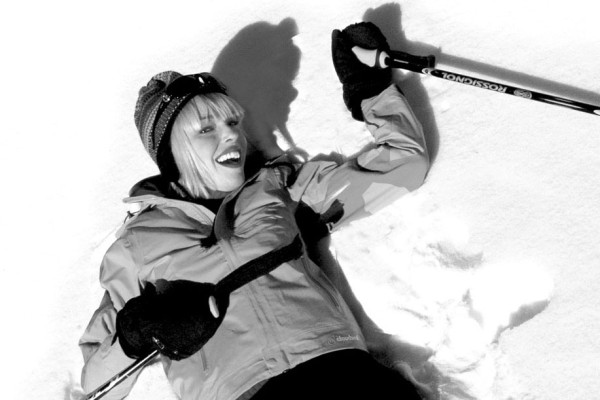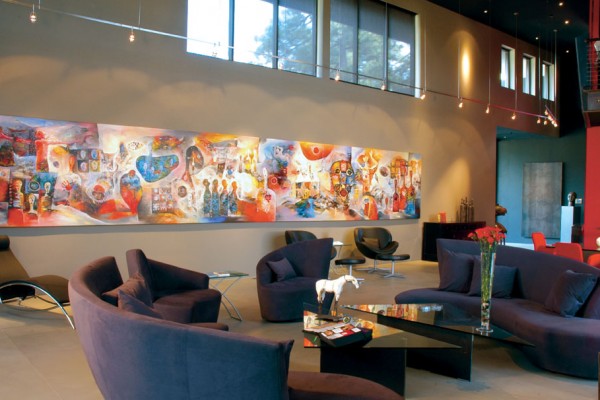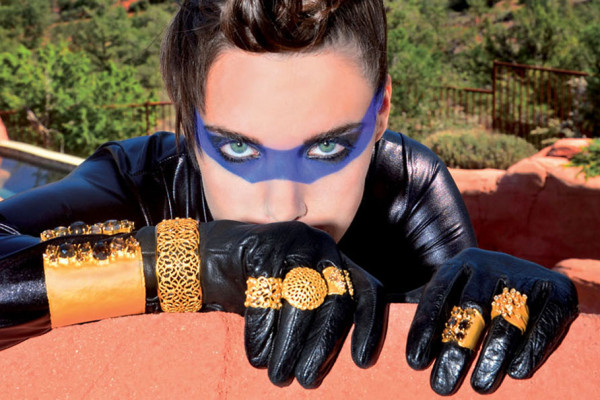Continued (page 3 of 4)
Kevin has been entering shows almost since he began carving – when he was in elementary school he won first place in his age division at the Heard Museum Student Art Show. After boarding school he returned to the reservation and began selling his katsinas to galleries in Sedona and at art shows in Phoenix and Flagstaff. Currently, his work can be found at Garland’s Navajo Rugs and Kachina House in Sedona as well as galleries and museums in Phoenix, Flagstaff, Scottsdale, Colorado, Utah, Santa Fe, San Diego, and Chicago. Until three or four years ago he focused on contemporary carvings but he says people began asking about traditional katsinas. At first Kevin thought they would be easy but quickly learned otherwise.“The traditionals are more primitive,” he says. “They take me back home and remind me of preparing for ceremonies.”
Today, he uses cottonwood root he gets from a friend living in Glenwood Springs, Colo. He says selecting the wood is the first step – if the wood has a few cracks it’s better suited for a traditional carving for a “prehistoric look.” He carves the piece with a pocket knife, sands it, glues on eyes and ears, and then white-washes the carving with a Hopi clay called tuma, which helps the paint stick to the wood. Kevin mixes his own paints using natural pigments and then mutes the colors with another coat of tuma. At the finish, he adorns the doll with goat fur, rabbit skins, raw cotton, horsehair, macaw or fowl game feathers and other accoutrements including seashells, cornhusks, Hopi grasses, yucca, leather, and sumac.
Some of Kevin’s most popular dolls include Cold Bringing Woman, Eagle, Sunface, Water Maiden, and his mudheads. He carves cradle dolls, particularly for art shows, since they tend to be the most affordable, and enjoys commissions (contact him at kevinsekakuku@yahoo.com). Kevin says he carves every day, even during shows. “My grandfather told me if you aren’t doing something people will think you are a lazy person,” he says. “People tell me I should take a break but I have to have a knife and piece of wood in my hand, ever since I watched my uncles.”
When Kevin first moved to the Valley he drove for a transportation company for about a year but has basically made a living with his art since the late 1990s. He has two children – a daughter who has a large collection of Kevin’s katsinas and a 3-year-old son who’s learning the craft (in Hopi tradition, men carve the katsinas). He says his parents, who still live on the reservation, are “blown away” by his art – his mom has Kevin’s first sculpture, first full-figure doll, and first flat doll. “I feel very fortunate to be able to raise my family off my artwork,” he says. “It was hard to get where I am now but I appreciate the struggle. It has made me stronger.”
Kevin admits he gets attached to some of his dolls but he doesn’t keep any for himself (he does give some to his wife, though). He feels a piece of his family history resides in each doll. “I like to meet the people who purchase the dolls,” he says. “I feel good when I know a piece is going to have a nice home. The Hopi say katsinas are our children and I want my child in a safe place where it will be taken care of, maybe rearranged, shown off to other people, dusted every now and then.” (FYI: Gerry Quotskuyva owns two of Kevin’s traditional katsinas.)
Friends have urged Kevin to try stone sculpting and he says he’s thinking about it. He’s tried his hand at silversmithing (his father, Sydney Sekakuku, is a master), weaving, and pottery, and he’s in a drum group called Thunder Boy, which hopes to release a CD this fall. While he loves to try new things, Kevin says he’ll always come back to his pocket knife and a piece of cottonwood root. “I don’t think I could do anything else.”
A Visit to Kachina House
Tucked away on Hopi Drive, appropriately enough, in West Sedona sits Kachina House, 5,500 square feet and six rooms filled with katsinas, pottery, jewelry, fetishes, sand paintings, and Native American artifacts. Owners Patty Topel and Toby and Judy Frank, all katsina collectors, bought the business in 2004; Kachina House had been at the location for four years before that. (Patty says the women kept the name “Kachina” rather than change it to “Katsina” because the shop already had a local reputation.) With 700+ Hopi katsinas on hand at any time – the women sell both wholesale and retail – Patty says Kachina House might have the largest selection in the world outside of private collections and museums.



